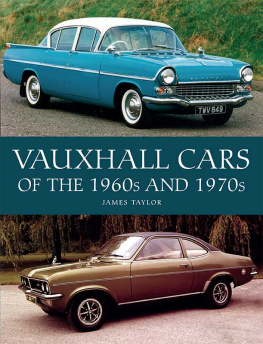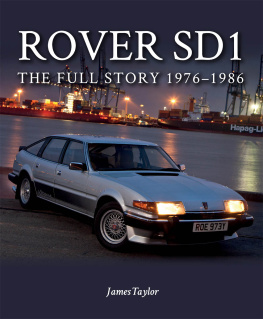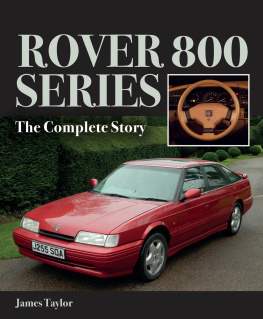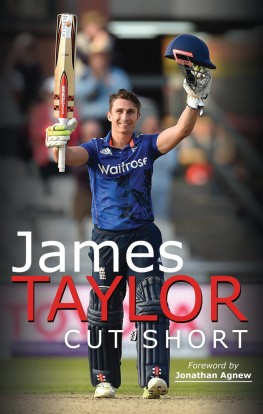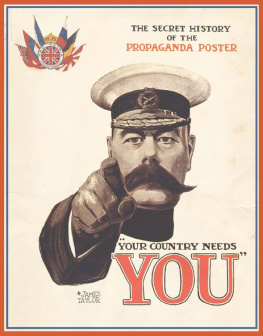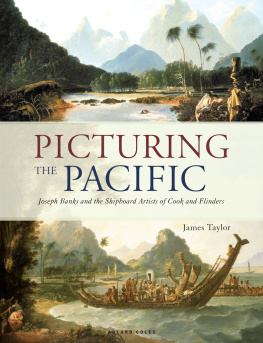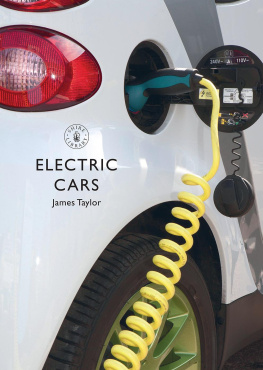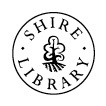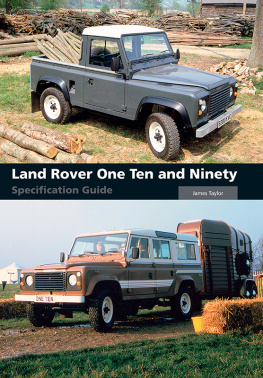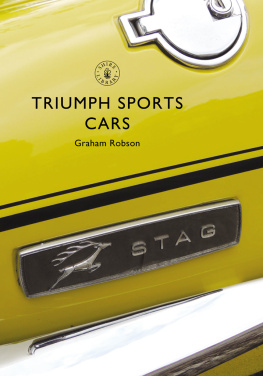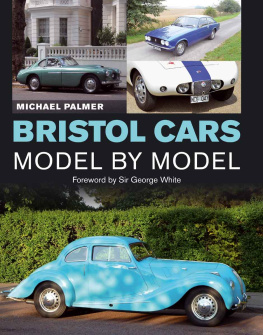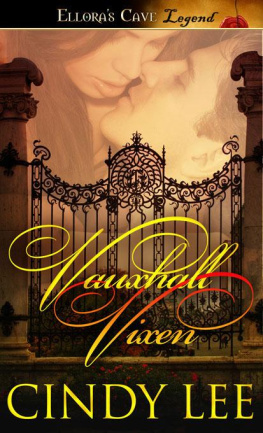Page List
VAUXHALL CARS
OF THE 1960s AND 1970s

VAUXHALL CARS
OF THE 1960s AND 1970s
JAMES TAYLOR

First published in 2021 by
The Crowood Press Ltd
Ramsbury, Marlborough
Wiltshire SN8 2HR
www.crowood.com
This e-book first published in 2021
James Taylor 2021
All rights reserved. This e-book is copyright material and must not be copied, reproduced, transferred, distributed, leased, licensed or publicly performed or used in any way except as specifically permitted in writing by the publishers, as allowed under the terms and conditions under which it was purchased or as strictly permitted by applicable copyright law. Any unauthorised distribution or use of this text may be a direct infringement of the authors and publishers rights, and those responsible may be liable in law accordingly.
British Library Cataloguing-in-Publication Data
A catalogue record for this book is available from the British Library.
ISBN 978 1 78500 811 5
INTRODUCTION AND ACKNOWLEDGEMENTS
Vauxhalls had a special place in the British motoring scene of the 1960s. Everybody knew that they were solid and reliable family cars; everybody knew that they rusted like it was going out of fashion; and everybody knew that they were easy to drive. The reliability and easy-to-drive characteristics were deliberate, and the rust was just something you had to live with, especially if you bought one that was a few years old.
Vauxhalls also have a special place in my personal motoring history, as I learned to drive in a Viva HB from the Bromley branch of the British School of Motoring. (I actually passed my test in a Triumph Herald, because the Viva wasnt available; I think somebody had bent it.) So it saddens me that the cars are not better appreciated on the classic car scene today. I know that there are many dedicated enthusiasts out there, and good luck to them; I just wish more people understood where Vauxhall fits into the history of the British motor industry in that fascinating decade.
In practice, this book covers just over two decades of Vauxhall history. It starts with the two new models for 1957 the F-series Victor and PA-series Velox and Cresta and it ends with the last FE-series Victor in 1978. By then, other new models had come along the Chevette, Cavalier and Carlton but these were a different breed of car that was not designed by Vauxhall, and to my mind they do not fit into the same era of the companys history.
I hope this book will inspire readers to take a greater interest in the Vauxhalls of this period. In particular, I can recommend the fabulous Vauxpedia web site (http://vauxpedianet.uk2sitebuilder.com/), which is a monument to one mans intense interest in the subject. It is best viewed on a large screen, but its examination of the design and development stages of the Vauxhalls covered here and of very many others is beyond comparison. I have also found some other books useful, notably Maurice Platts An Addiction to Automobiles, Ian Coombers Vauxhall, Britains Oldest Car Maker, and Vauxhall Cars 19451964 by Alan Earnshaw and Robert W. Berry (there is a second edition of this that takes the story through to 1984).
I must also add thanks to some people who helped out along the way. My friend Richard Bryant (who learned to drive in a Victor 101) checked through the manuscript for the kind of stupid mistakes that an author can never spot; many years ago my friend Peter Pope allowed me to crawl all over his magnificent FB Victor, although the pictures I have used here are far better than the ones I took at the time; and Andrew Duerden of Vauxhall Heritage deserves special mention for finding a superb selection of photographs for me, even though the museum was closed and he was working from home during the coronavirus lockdown. Lastly, several photographs have come from online sources and their authors have very kindly made them available for further use; these have proved invaluable.
James Taylor
Oxfordshire
April 2020
TIMELINE
| 1957, February | Victor F-series |
| 1957, October | Velox PA and Cresta PA |
| 1961, August | Victor FB |
| 1962, October | Velox PB and Cresta PB |
| 1963, September | Viva HA |
| 1964, October | Victor FC or Victor 101 |
| 1965, October | Cresta PC |
| 1966, June | Viscount derivative of Cresta PC range |
| 1966, September | Viva HB |
| 1967, October | Victor FD |
| 1968, February | Ventora FD |
| 1968, May | Estate variants of the Victor FD |
| 1970, October | Viva HC |
| 1971, May | Firenza variant of the Viva HC |
| 1972, March | Victor FE |
| 1972, August | End of PC-series production |
| 1973, October | Magnum derivatives of the Viva HC, Firenza HP |
| 1976, January | VX 1800 and VX 2300 variants of the Victor FE |
| 1978, December | End of Magnum HC production |
| 1978, July | End of FE-series production |
| 1979, July | End of Viva HC production |
CHAPTER ONE
A CLASSIC ERA, 1957 TO 1979
At the start of the period covered by this book,Vauxhall was a highly respected name among British motor manufacturers. Vauxhalls had a reputation as family cars that were reliable, easy to drive, straightforward to maintain, and provided good value for money. They were not glamorous or prestigious, but they did stand for solid, middle-class values, and they usually incorporated some ultra-modern features that distinguished them from their competitors.
By the end of the period, the Vauxhall name had been dragged through the mud along with those of many other British marques, and the company had been relegated by its American owners to second-best behind Opel in Germany. For the Vauxhall company, it had been a roller-coaster period of just over two decades, but it had produced some memorable cars that have belatedly become acknowledged as classics.
TWO MEMORABLE DECADES
1957 was a watershed year for Vauxhall. Ever since car production had restarted at the end of World War II, the company had been obliged to base all its models on a single bodyshell because its Luton factory did not have enough space to build two model ranges at once. But in 1957, new assembly buildings were completed, allowing the company to build clearly differentiated models for the 4-cylinder 1.5-litre class, and the over 2-litre 6-cylinder class.
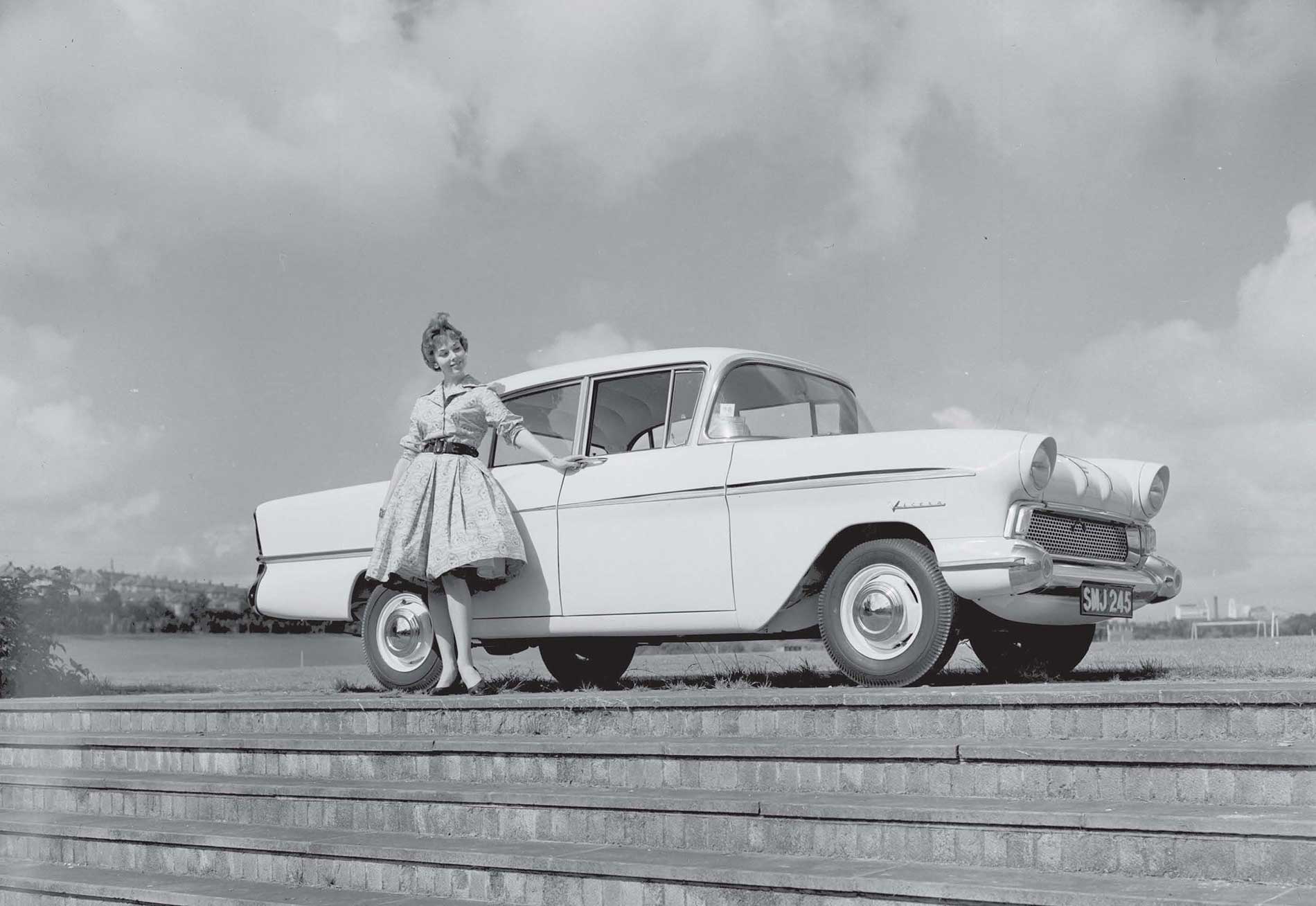
The F-series Victor introduced in 1957 was a clear witness to the fact that Vauxhalls owners, General Motors, believed that American styling led the world.
VAUXHALL HERITAGE
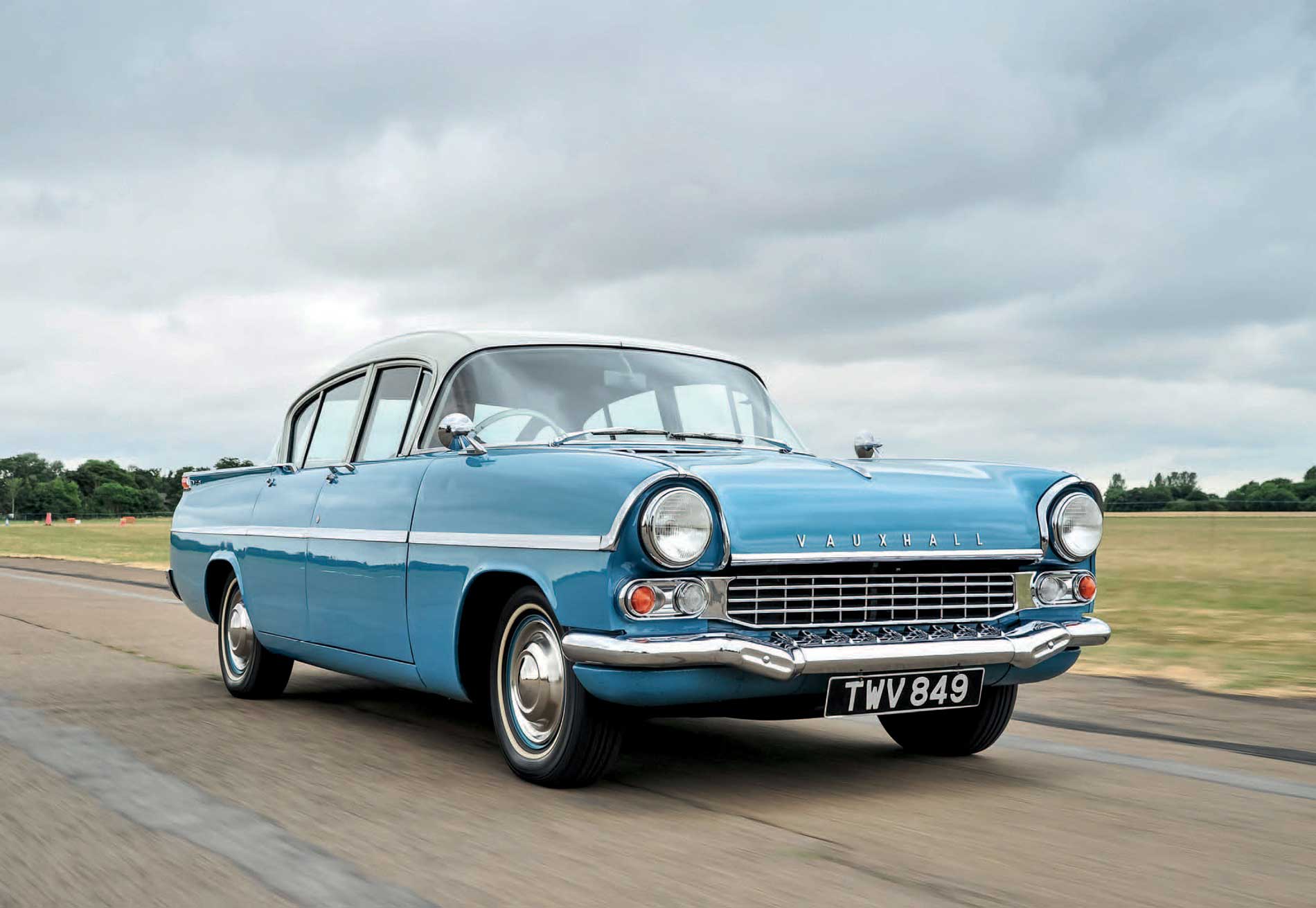
When American styling themes were applied to the larger 6-cylinder cars later in 1957, the result was nevertheless a classic shape. This is a 1959 PA-series Velox.

